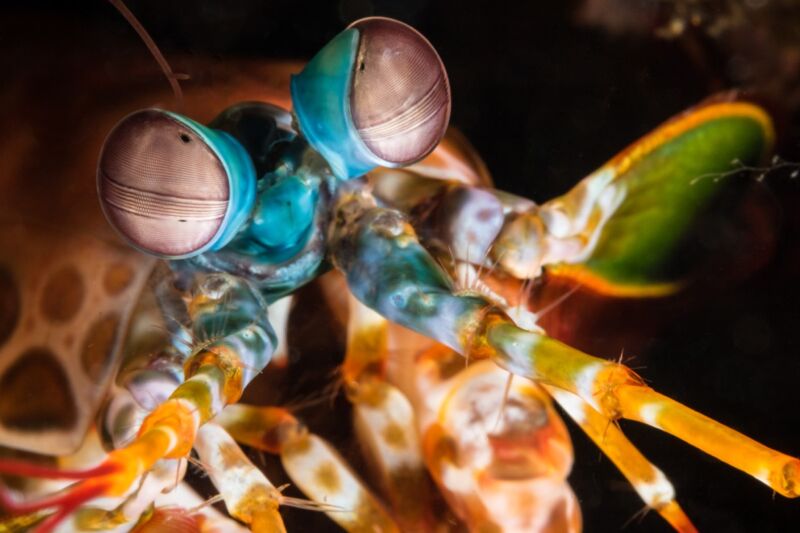
Enlarge / Scientists have developed a new type of light sensor inspired by the eyes of the mantis shrimp. (credit: Brent Durand/Getty Images)
Smartphone cameras have improved dramatically since the first camera-equipped cell phone was introduced in 1999, but they are still subject to tiny errors in the alignment of different wavelengths of light in the final image. That’s not a concern for your average Instagram selfie, but it’s far from ideal when it comes to scientific image analysis, for example.
Nature seems to have provided a solution in the eyes of the mantis shrimp, which inspired researchers at North Carolina State University (NCSU) to develop a new type of optical sensor. The sensor is small enough for smartphone applications, but it’s also capable of breaking down visible light wavelengths into narrower bands than current smartphone cameras can manage, as well as capturing polarized light, according to a recent paper published in the journal Science Advances.
Human eyes have three photoreceptors for detecting red, green, and blue light. Dogs have just two photoreceptors (green and blue), while birds have four, including one for detecting ultraviolet (UV) light. Octopuses, meanwhile, can detect polarized light. But mantis shrimp (aka stomatopods) have the most complex eyes of all: they can have between 12 and 16 individual photoreceptors and can thus detect visible, UV, and polarized light.





